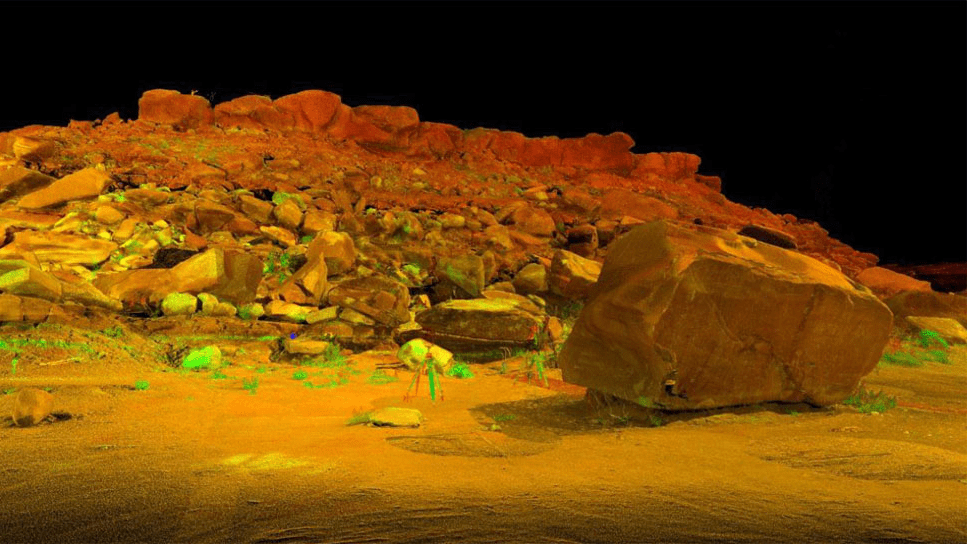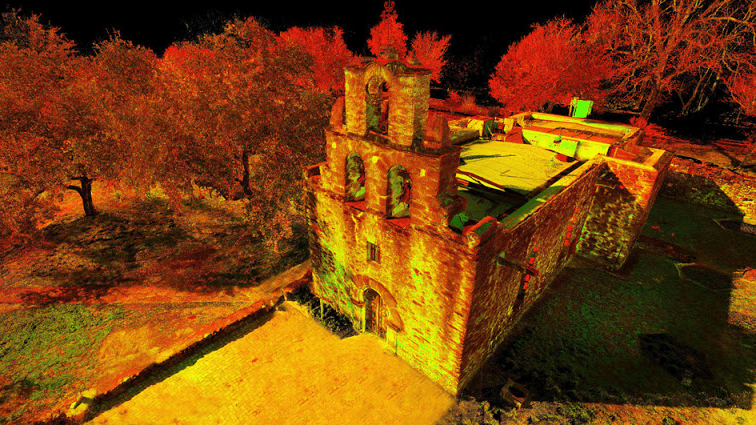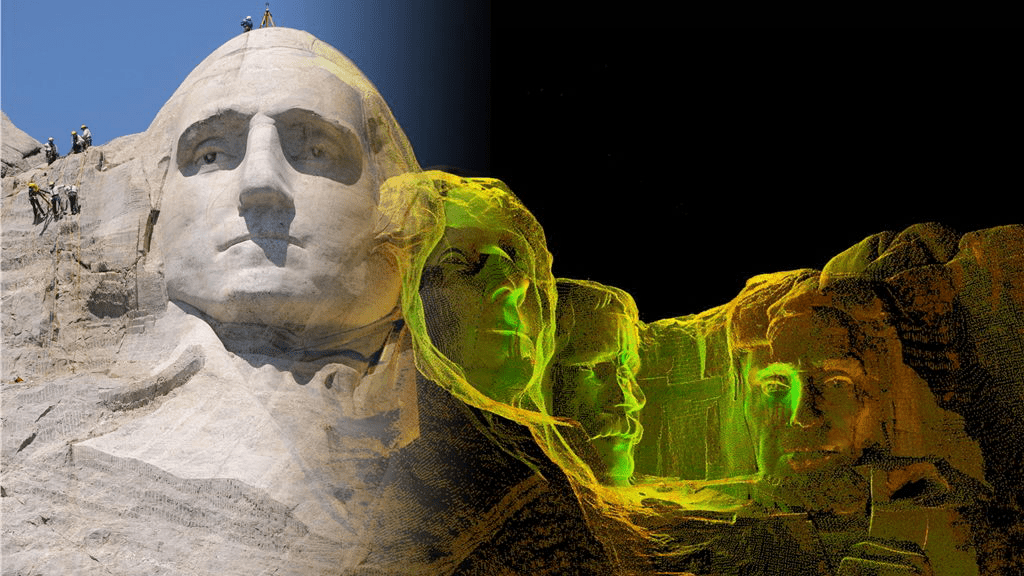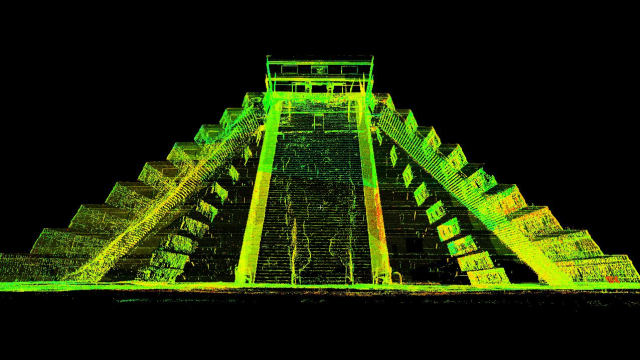Imagine creating a 3D digital archive of 500 of the world’s most at-risk heritage sites, preserved in virtual reality so that future generations can explore them in detail for centuries to come. That’s exactly what the CyArk 500 Challenge hopes to achieve — and it’s set itself the ambitious target of doing it in just five years.
Ancient Origins
The brainchild of Ben Kacyra, an Iraqi-born engineer and entrepreneur, the project, which will officially launch at a conference in London on Monday 22 October, aims to digitise the world’s most significant physical heritage sites. “I grew up in the city of Mosul in northern Iraq, and when I was a little child my father would take me by the hand to the Gates of of Nineveh,” Kacyra explained to Gizmodo. “When the Taliban dynamited the Bamiyan Buddhas in 2001, I realised the same thing could happen to Nineveh — or any other heritage site. And it needn’t be destruction by man, but by natural disasters or erosion.” That was enough to convince him to strike out and start preserving these ancient sites in glorious 3D detail.
Fortunately, he was well-placed to do so. Kacyra, with a background in design, engineering and construction, developed some of the first portable 3D laser-scanning systems with his company, Cyra Technologies, back in 1993. Born out of a need to automate measurement for complex construction projects, they used time-of-flight scanning: the device shoots out a laser pulse and measures the time it takes for it to travel to a surface, bounce off it, and return to the scanner. By scanning in all directions, collecting millions of measurements, it’s possible to generate renderings of entire spaces which are accurate to within millimeters. Unsurprisingly, they weren’t just used for construction, but also became popular in the film and video game industries.

With that knowledge and technical ability in place, Kacyra set up CyArk in 2003 with his wife, Barbara, to digitally preserve cultural heritage sites. 10 years on, and the organisation has successfully captured over 100 sites, including the cave dwellings of the Anasazi people in Colorado, Egyptian tombs, the ruins of Pompeii, the Mayan temples in Guatemala, the Tutuveni Hopi Petroglyphs and the Hindu temple of Angkor Wat in Cambodia.
Their model sees them build partnerships with other parties interested in acquiring the data — from universities to UNESCO. CyArk then provides the hardware, while the partners provide the manpower.
The Future of the Past
Over the last 10 years, the technology has come on in leaps and bounds. “The original systems we big hunks of things that had to be lugged in the field, plus they were slow and expensive,” explains Kacyra. “Now they’re compact, much faster, higher resolution, and cheaper.” But a decade doesn’t just bring incremental changes — it brings complete paradigm shifts too.
So, while the bulk of CyArk’s work uses engineering-grade scanners that cost around $US60,000, they can now complement those techniques with others, too: small-scale, near-field imaging which uses technology similar to Kinect to acquire some data more cheaply, or aerial Gizmodo.

With all this to hand, it’s no surprise that Kacyra has ambitious plans. “It’s become apparent that we have neither the time nor the money to preserve all these sites physically,” he explains. “But we do have the digital tools.”
On Monday 21 October, he’ll thus formally launch the CyArk 500 Challenge: to digitally preserve 500 cultural heritage sites within the next five years. Why 500? Kacyra was so shocked at the break-neck speed with which heritage sites around the world are deteriorating — or, worse, disappearing — that he felt he needed to challenge himself and the rest of the world to do something dramatic.
As a result, the project sounds like an incredibly daunting prospect — but Kacyra insists that the major obstacle he faces isn’t one of technology or manpower. “We have the technology, which works and is expandable, and we have partners all over the world, so we’re not one organisation doing it over five years — but 100 or 200 organisations,” he said. “The big challenge we face is funding.”
After all, plenty of the cultural sites that the project hopes to preserve happen to be located in some of the poorest countries, which simply don’t have money to spend on this kind of digital preservation. The project, then, rests on capturing the imagination of enough organisations and investors to keep the acquisition of data rolling along.
Story, Not Storage
Once it’s all acquired — the phase of the project affectionately referred to as scan-and-can — the work is not over. “It’s not about storage,” insists Kacyra. Indeed, just because CyArk dumps all that data onto its 2 petabytes of disk space — with a gold copy stored at Iron Mountain’s underground facility in Pennsylvania — doesn’t mean that’s where it stops. The whole point of the project is to disseminate all this information; to make it accessible to people who can’t see these sights in real life, and for future generations who might find them lost forever.
“It’s about the story,” Kacyra emphasises. “About education. But not education in the old-fashioned sense.” So his team is also compiling educational resources to share their digital copies of these structures with people: virtual tours, interactive apps, 3D-printed models, and automated advice for those physically restoring sites (their Mount Rushmore data, for instance, was used to map cracks in the stone faces in order to repair them).

Sadly, the manpower and time investment required to make the educational stream work is expensive — something that the CyArk team could do without. But Kacyra is hopeful that near-future technological developments will help it become an ever more important part of CyArk. “The Achilles heel of the entire reality capture field is the software. I’m looking to the day where our software is so automated that the processing accounts for just a fraction of the work done in the field,” he adds. “Software development has lagged, but the likes of Autodesk and other are now seeing the importance of the field and working hard to dramatically improve things… It’s coming.”
And if the processing can catch up with the rate of data acquisition that Kacyra and his team have at their disposal, then the CyArk 500 Challenge won’t seem anywhere close to as daunting as it sounds right now.

Pictures: CyArk
